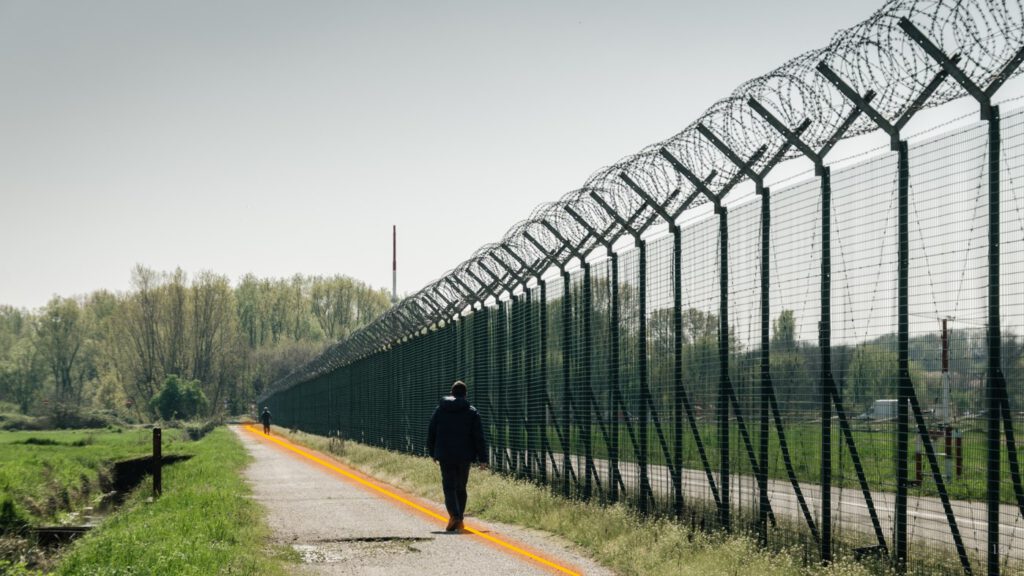Imagine sitting on your flight at the Los Angeles International Airport (LAX), it’s 4:45 a.m., and you’re waiting for the plane to take off finally. Suddenly, a man emerges from the airport’s perimeter, walking toward the plane. He’s clearly not part of the airport crew, and now he’s trying to board the flight. This is not an imaginary scenario in the backdrop of one of the world’s busiest airports but an actual recent incident that took place in 2021 and serves as a stark reminder of the vulnerability of even the most fortified locations.

Matthew Maine, the alleged suspect, breached the airport’s outer perimeter fence using an instrument to pry open the bottom of the fence and slip underneath. He then allegedly tried to board an American Airlines plane being serviced. He was spotted and detained by a cleaning crew that immediately notified the airport police, and Maine was arrested.
It seems unbelievable that in this day and age, critical infrastructure such as airports or special compounds, like powerplants and other sensitive facilities, can be breached. However, with over 41,000 airports worldwide, according to the U.S. Central Intelligence Agency (CIA), with the majority of them in the United States, monitoring and security of such perimeters prove to be a challenge. Shockingly, hundreds of similar security breaches occur every year in multiple airports worldwide.
Since the Sept. 11 attacks, hundreds of millions of dollars have been spent to upgrade detection technology along airport perimeters. In 2020, the U.S. Administration authorized more than $1.2 billion in grants for airport and infrastructure safety, and many of these grants were specifically to address perimeter security and access control. Despite all this investment, a year later, in 2021, Matthew Maine managed to breach LAX’S highly secured perimeter.
Current Monitoring Solutions are Good but Not Good Enough
There are many existing sensors and methods used for physical perimeter security and protection: surveillance cameras, CCTV, motion detectors, indicative fences, and ground patrols are some of them. But why, after all these excessive financial and operational investments, the current perimeter monitoring solutions are not enough to stop intruders?

Surveillance cameras may have blind spots or areas with limited coverage due to weather or location conditions. Intruders carefully study the camera angles and find vulnerable sites where they are less likely to be seen, enabling them to navigate through these areas undetected. They can even use laser pointers to blind the cameras temporarily or cut power/network cables to disable them. Sophisticated intruders may try to jam or spoof signals used by motion detectors, disrupting their functionality, and rendering them ineffective. Regarding ground patrols, the simple disadvantage is that the patrols can’t be everywhere, and intruders take advantage of shift changes or lapses in security procedures to manipulate or deceive security personnel.
Although these existing solutions are essential for perimeter security and integral to the entire operational security concept for sensitive facilities. So why aren’t they enough?
In one word: Visibility
All these sensors and systems are, eventually, visible and can be easily overcome. As intruders become more technically savvy, they have learned to avoid the existing monitoring solutions. Mixed with critical facilities being located in challenging locations, with specific climate conditions, forces operators to spend much time responding to false alarms.
This leads to the inevitable conclusion that there is a need for a new kind of intrusion detection solution that is almost impossible to overcome.
You Can’t Avoid What Is Not There

Hyper-Scan Fiber-Sensing™ technology is leveraging existing or deployed fiber optic cables buried around the perimeter to create an invisible barrier. The optic fiber is turned into a set of highly sensitive distributed sensors, sensing every point on the asset in real-time and collecting highly detailed acoustic and seismic vibration signatures. These are fed into machine learning algorithms that classify the data, differentiating possible threats from “noise” and interference, such as cars passing by, animals touching the fence, etc. Leveraging this technology drastically reduces false-positive while lowering false alarm rates (FAR) and nuisance alarm rates (NAR).

Different seismic signatures classification (animal vs. person distinction), as captured during a perimeter monitoring trial.
To put it plainly, even if intruders approaching the perimeter know about the buried fiber, it doesn’t matter, as they can’t avoid being detected. With clear identification and classification of events such as on-foot activity, light, and heavy vehicles approaching, fence crossing, animal/person distinction, and more, fiber optic sensing technology has ushered in a new era of perimeter security monitoring, revolutionizing how we safeguard critical infrastructure.
Top Monitoring Security at Scale
With air travel returning to “regular” pre-pandemic levels, according to the International Civil Aviation Organization (ICAO), strengthening airports‘ safety and security is more important than ever. As fiber optic sensing technology allows accurate monitoring from one kilometer to tens of kilometers and over, it represents a scalable, robust, and particularly cost-effective solution compared to the threats at hand.
And what about maintenance? When it comes to existing monitoring solutions, vandalism, or weather damage, such as extreme temperatures or heavy rain, can create unexpected maintenance interferences. In addition to periodic batteries or power source replacements, regular checks to calibrate and test the sensors are mandatory. Physical fences involve routine inspections for signs of damage, repairs to address wear and tear or breaches, and regular maintenance to ensure structural integrity.
Fiber optic sensing technology is not only highly effective but also maintenance-free once the fiber optic cables are installed and buried underground. With such an easy deployment, this monitoring solution is effective on installation day. This reflects a significant cost reduction in perimeter security, especially with such a scalable solution.
The bottom line: this monitoring solution can make the difference between a dangerous security breach opposed individuals like Matthew Maine, being identified 10 meters from the perimeter fence, and a patrol guard already waiting for them when they approach the fence.
Learn more about how PrismaHedge is changing the face of perimeter monitoring






